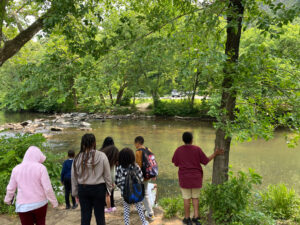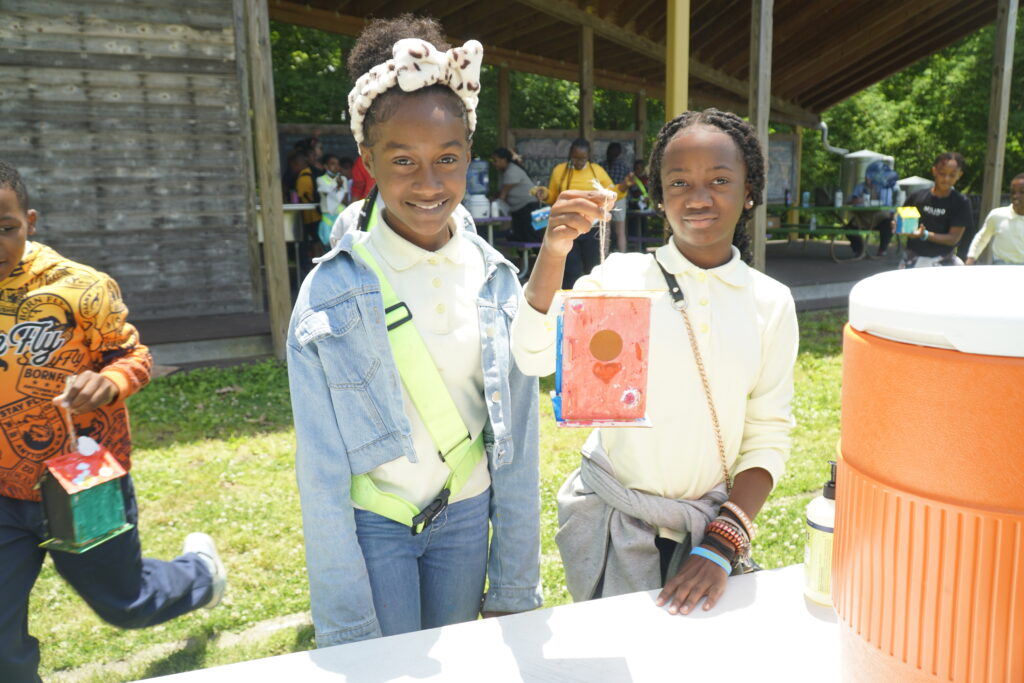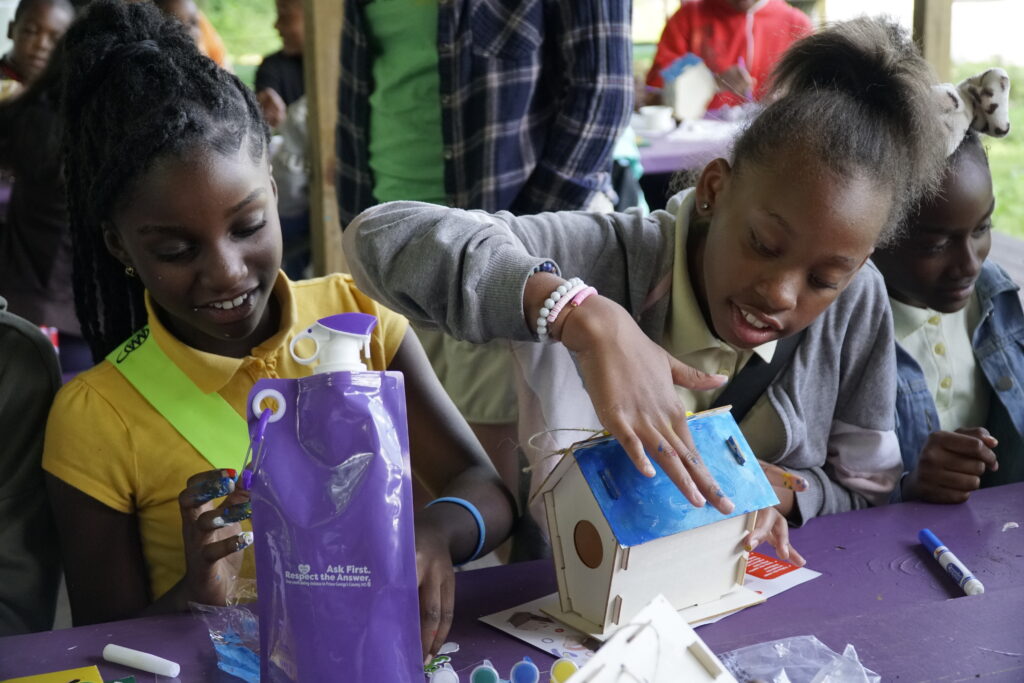THE LEAFLET

School’s Out!
It is no secret that here at Casey Trees we are passionate about youth education. Afterall, to grow a greater, greener city, we must work together, not just today or tomorrow, but day after day and year after year. When we teach younger generations about the value of trees and green space now, we will ensure that our city’s lush tree-filled legacy continues. This is why we host annual TreeWise Summer Youth Camps, host School Tree Plantings, and develop engaging memorable moments with 5th grade students through our Nature Near Schools Program.
The Nature Near Schools projects follow a Meaningful Watershed Educational Experience (MWEE), where students explore issue areas, local context, and conclude their experience with a student-directed action project. This year, our education team connected with students from eight different schools to learn how they can make positive changes around their campuses.
Burroughs Elementary School
 Burroughs students learned that they have a wealth of outdoor space that includes pollinator gardens and stormwater retention spaces. Air quality at Burroughs is good and can be improved by more green spaces. Students used Air beams to measure air quality and learn about the sources of air pollution.
Burroughs students learned that they have a wealth of outdoor space that includes pollinator gardens and stormwater retention spaces. Air quality at Burroughs is good and can be improved by more green spaces. Students used Air beams to measure air quality and learn about the sources of air pollution.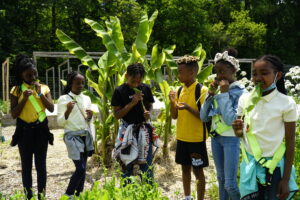
For their field trip, the students visited the US National Arboretum, a “tree museum” in DC. They heard from an educator at the Washington Youth Garden about the importance of diversity for plants, wildlife, and people. As for their action project, Burroughs 5th graders chose to increase wildlife in their schoolyard. They made a visit to the Washington Youth Garden to learn about pollinators and built birdhouses to increase biodiversity at the school.
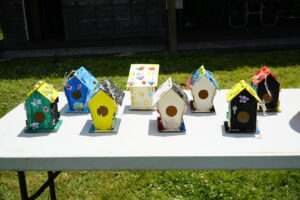
Garfield Elementary School
 Garfield’s campus is being renovated. Students learned about how new construction can have both positive and negative impacts on the environment. Students delighted in using Air beams to measure air quality and surface thermometers to measure the impact of the Urban Heat Island Effect. The 5th graders transformed into scientists and used tools to collect data and support their claims.
Garfield’s campus is being renovated. Students learned about how new construction can have both positive and negative impacts on the environment. Students delighted in using Air beams to measure air quality and surface thermometers to measure the impact of the Urban Heat Island Effect. The 5th graders transformed into scientists and used tools to collect data and support their claims.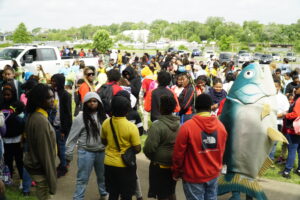
Garfield joined 300 students throughout the Anacostia Watershed at the Anacostia Environmental Youth Summit for student showcases, boat tours, and field experiences. Garfield took an outdoor pledge to have a positive impact on the environment. Students advocated for anti-racist action, an important component in the environmental justice movement.

Ketcham Elementary School
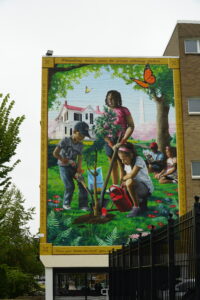 Students learned that their campus could have an impact on their nearest river-the Anacostia! The namesake of their school’s neighborhood. 5th graders loved sampling the edible flower of the Redbud and sharing their foraging bounty with honeybees. They learned of the importance of tree diversity and the impact our urban forest has on wildlife.
Students learned that their campus could have an impact on their nearest river-the Anacostia! The namesake of their school’s neighborhood. 5th graders loved sampling the edible flower of the Redbud and sharing their foraging bounty with honeybees. They learned of the importance of tree diversity and the impact our urban forest has on wildlife.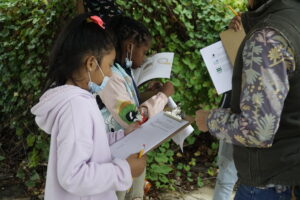
Ketcham 5th graders also joined 300 students at the Anacostia Environmental Youth Summit for student showcases, boat tours, and field experiences. Ketcham students love their outdoor spaces! Inspired by the murals at the school of tree planting students and the Anacostia River on the sidewalk-students conducted a tree care event and trash cleanup.
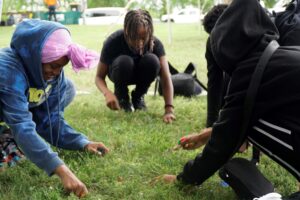
Kimball Elementary School
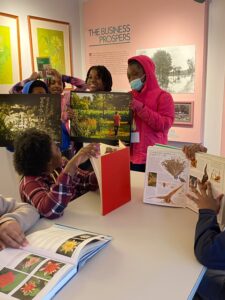 Students measured air quality at their school using an Air beam to understand the impact of cars on local air pollution. Students discovered the tree diversity at Kimball, and how the rain gardens can collect excess stormwater.
Students measured air quality at their school using an Air beam to understand the impact of cars on local air pollution. Students discovered the tree diversity at Kimball, and how the rain gardens can collect excess stormwater.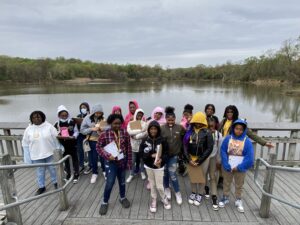
Kimball students explored Kenilworth Aquatic Garden and saw the direct connection their school has with the Anacostia Watershed. They encountered exciting wildlife including snapping turtles, egrets and frogs. Kimball students are activated in advocacy. Students wrote letters to local stakeholders to advocate for increased time learning and playing outside in their beautiful outdoor spaces.
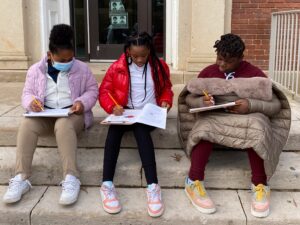
Marie Reed Elementary School
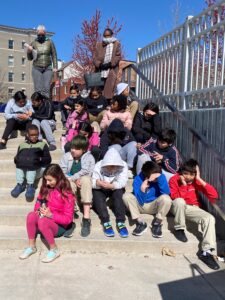 Marie Reed students spoke with their ANC Commissioner and Ward Councilmember about the importance of the environment on Ward 1. The 5th graders explored tree diversity on their school’s campus, and learned how trees can make a positive impact on air quality in the city.
Marie Reed students spoke with their ANC Commissioner and Ward Councilmember about the importance of the environment on Ward 1. The 5th graders explored tree diversity on their school’s campus, and learned how trees can make a positive impact on air quality in the city.
Students visited Anacostia Park and had the opportunity to go on a boat tour of the Anacostia River. They also explored marine wildlife local to their watershed at the Aquatic Education Resource Center. Marie Reed students advocated removing straws from the cafeteria. Using data from the Nature Near Schools program, they saw how straws could impact wildlife in the Anacostia Watershed.
Watch the video below to learn about their action project from Marie Reed Students themselves!
Noyes Elementary School
 Students met with Ward 5 Councilmember, Zachary Parker, and learned about how education and policy connect. Students measured air quality at their school using an Air beam. They used maps to better understand where air pollution comes from and how they can reduce pollution in their community.
Students met with Ward 5 Councilmember, Zachary Parker, and learned about how education and policy connect. Students measured air quality at their school using an Air beam. They used maps to better understand where air pollution comes from and how they can reduce pollution in their community.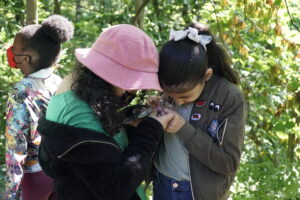
5th graders traveled to the nearby US National Arboretum, a “tree museum” in the city. They visited the Asian collection and walked to the Anacostia River. They could see both positive and negative impacts on the environment, from their school to the riverbanks. Like many of us, students were disturbed by the pet waste left in front of the school. They made poster Public Service Announcements so dog owners would know the impact their waste had on the watershed…and on the school!
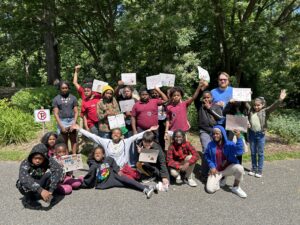
Simon Elementary School
 Students measured air quality and water quality this year through their neighborhood-based program and an overnight with Nature Bridge. The Simon 5th graders explored their campus using scientific tools like an Air beam and a temperature gun, to see the impact that trees have on air quality and temperature at their school.
Students measured air quality and water quality this year through their neighborhood-based program and an overnight with Nature Bridge. The Simon 5th graders explored their campus using scientific tools like an Air beam and a temperature gun, to see the impact that trees have on air quality and temperature at their school.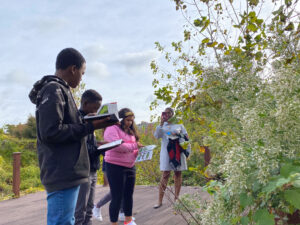
Simon students toured the Anacostia River by boat and noted the impact humans have had on the local ecosystems. Thanks to the Anacostia Riverkeeper for giving many of Simon students their first ever boat ride. Students were delighted to spot turtles, ospreys, and a bald eagle. 5th graders were concerned about passersby who would smoke near the school. Using data from our air quality lesson, students created a poster Public Service Announcement to share the dangers of smoking on air quality and its relationship to human health. Further, they encouraged everyone alike to properly dispose of trash to keep our rivers clean.

Whittier Elementary School
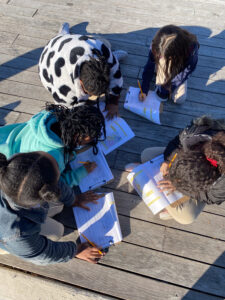 Whittier students learned about Urban Heat Island Effect and measured surfaces in the outdoor classroom. Students witnessed the impacts of stormwater retention gardens and advocated for increased use of their outdoor spaces.
Whittier students learned about Urban Heat Island Effect and measured surfaces in the outdoor classroom. Students witnessed the impacts of stormwater retention gardens and advocated for increased use of their outdoor spaces.
Students visited Peirce Mill, a US National Park Service historic landmark in Rock Creek Park and explored the trees around it. On their field trip, the students partook in a tree care activity, watering trees and removing invasive species from their trunks/roots.
